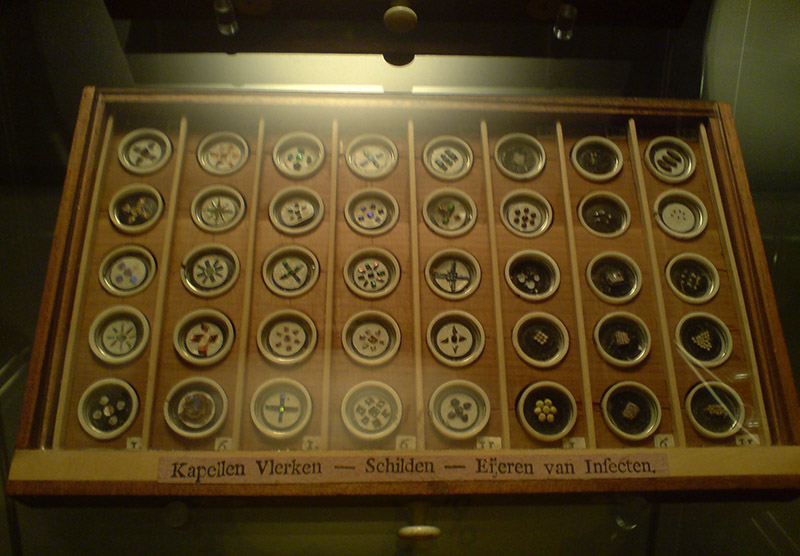
Figure 1. A drawer of Ypelaar microscopical preparations. Adapted for nonprofit, educational purposes from http://www.bramontdekt.nl/uncategorized/ypelaar/
Abraham Ypelaar, 1736 - 1811
Martin Sas, 1754 - 1811
succeeded by
Daniël Scholte, 1757 - 1832
by Brian Stevenson
last updated December, 2016
Abraham Ypelaar is best remembered for his high-quality circular microscope “slides”, made of ivory or bone, with glass covers. The preparations vary between 1 and 2 cm in diameter. Specimens are generally arranged in geometric patterns or other artistic design. Similar round mounts are occasionally found at auction, but many were probably made by later manufacturers. Ypelaar’s use of glass covers, rather than mica, can help discriminate between those preparations that were and were not made by him. The thickness of the glasses range between 0.2 and 0.7 mm, with a slight curve indicative of production from glass blown into a large, thin bulb. Most preparations were mounted dry, but some are known in which he used a transparent varnish consisting of resin and turpentine. He also produced uncovered objects for examination by top-lighting. He was one of the first professional preparers of specimens for the microscope, starting a business in the 1780s. Some of his larger sets included elongated ebony or brass holders for the circular preparations, facilitating easy viewing on any microscope stage. He sold his preparations in sets, from a dozen to over a thousand objects, all of which he signed in some manner, to distinguish his works from those of competitors. Ypelaar also manufactured and repaired microscopes, which are very rarely seen outside of museums.

Figure 1.
A drawer of Ypelaar microscopical preparations. Adapted for nonprofit, educational purposes from
http://www.bramontdekt.nl/uncategorized/ypelaar/
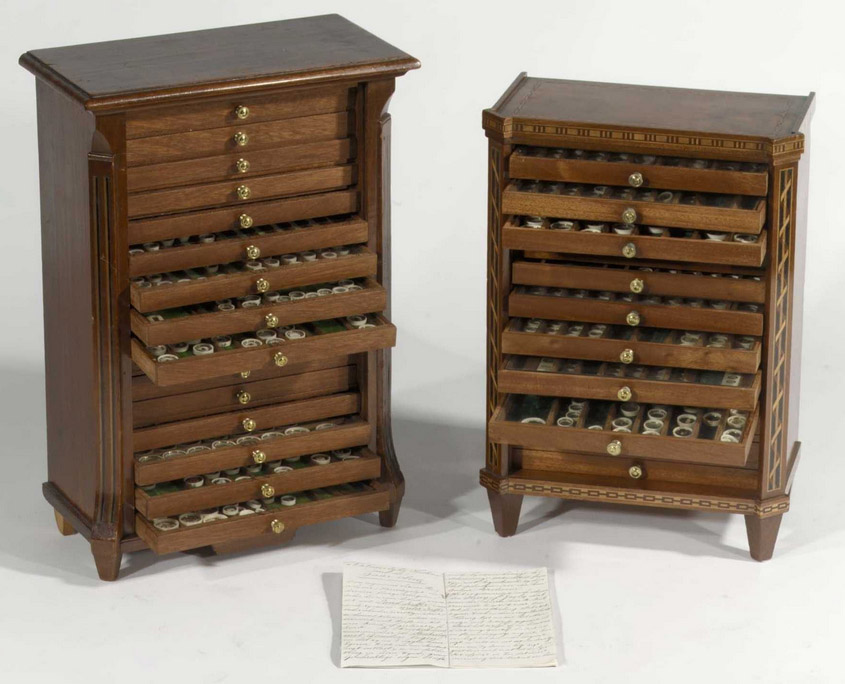
Figure 2.
Two cases of Ypelaar preparations. Adapted for nonprofit, educational purposes from Planetarium Zuylenburgh.
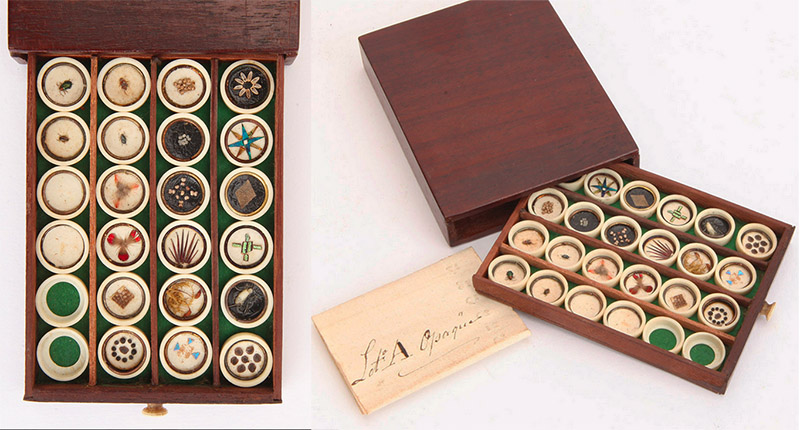
Figure 3.
A drawer of 24 Ypelaar preparations. The set is accompanied by a handwritten list of the specimens, stamped with "A Ypelaar" (see Figure 6). Adapted for nonprofit, educational purposes from an internet sale site.
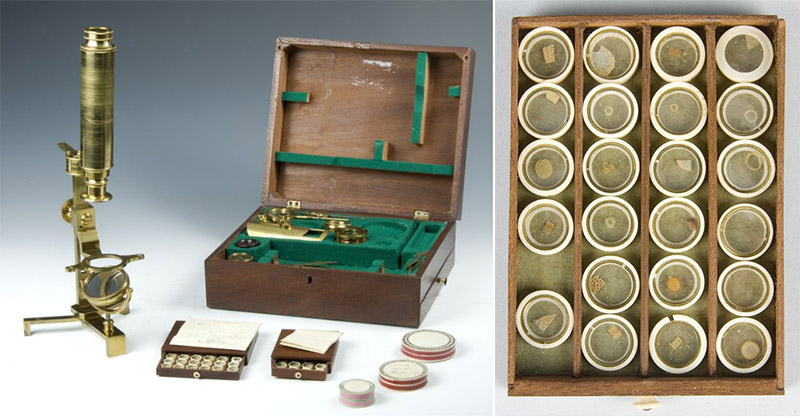
Figure 4.
A microscope Harmanus van Deyl (1738-1809) and two drawers of microscopic preparations by Ypelaar. The handwritten list that accompanies the small drawer is signed with "A Ypelaar and Comp", dating the set to after circa 1808 (see Figure 6). Adapted for nonprofit, educational purposes from The Harvard University Collection of Historical Scientific Instruments
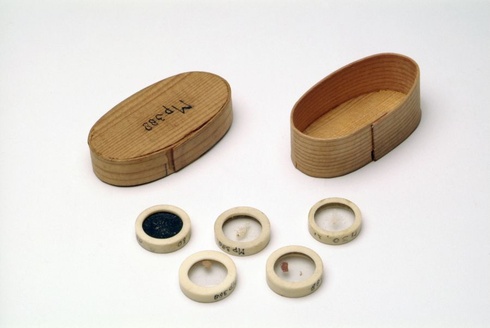
Figure 5.
Preparations of lacewing, by Daniël Scholte. Adapted for nonprofit, educational purposes from Museum Boerhaave
Abraham was born on the 3rd of May, 1736, in Amsterdam, Netherlands. He was a son of James Ypelaar, a captain of the Dutch East-India Company, and Alida van Rijschoten. He trained to be a diamond cutter and setter, and later became a master of the craft and a diamond merchant. He became a citizen of Amsterdam in 1759. Both of his parents had died by the time he married Anna van Dijk in 1762
As a youth, Ypelaar developed strong interests in nature and biology. Inspired by the writings of microscopists such as Leeuwenhoek and Swammerdam, Ypelaar sought to replicate their observations. His trade had taught him delicate motor skills, and he soon produced quality mounts that overshadowed those of other preparers. Until the early 1780s, slide-making was simply a hobby for Ypelaar. He collected and mounted anything that caught his fancy. Probably through his father’s sea travels, and through his own later overseas business connections, Ypelaar acquired a wide variety of exotic specimens. He later claimed that after selling his preparations for more than 20 years, he still had much of the material he collected during his youth.
Martin Sas was a cousin of Ypelaar. His parents, Hubertus and Anna Loman Sas, died when Martin was young. Hubertus was a prosperous businessman, and left a significant inheritance to Martin. After their deaths, Martin went to live with Abraham Ypelaar. Shortly thereafter, Ypelaar invested heavily in international commerce, presumably financed by Martin’s wealth.
The Fourth Anglo-Dutch War broke out in 1780, lasting until 1784. The war severely damaged the Dutch economy, and crippled Ypelaar’s business. To make ends meet, he began to sell off his microscopical preparations.
Thus began a new line of work. Martin joined Abraham in the slide-making business, although the business name of A. Ypelaar and Company is not recorded until 1808. This may have been for business reasons, since Ypelaar was well-known in microscopy circles.
Ypelaar’s preparations included all sorts of animals, plants, and minerals. These included the usual materials that did not require much preparation, such as whole fleas and lice, small shells, fish scales, hairs, insect wings, corals, pieces of skin, seeds, sands, fragments of stone or ores, etc. He was, however, very adept at dissecting insects, and mounted tissues such as mouth parts, stings, and tracheae. He even produced micrometers that consisted of the dissected eye of a horse fly, since the eye facets are of uniform size. A letter within a case at the Netherlands History of Science Museum reads, “The micrometer, prepared by Abraham Ypelaar in October 1804 at Amsterdam, according to his statement, from a strip of the connected walls of the eye of a horse fly, where the balls have been extracted, has twelve sufficiently equal parts, which taken together form, according to an accurate measurement, almost exactly the half of a French line, and therefore the 24th part of an inch, and consequently each division 1/288th part of an inch. It serves to measure the size of minute objects”.
Martin Sas married in 1807, when he was 53 years old, to Jannetje Everts van Essen. They had one child together. Abraham and Anna Ypelaar did not have any children.
Ypelaar and Company exhibited their microscopical preparations at the 1808 Exposition of Products of National Industry, in Utrecht. While his work was well-known within a limited circle, Ypelaar sought to increase his customer base through the exhibition. His entry was accompanied by a letter to the Minister of the Interior, stating that his “artistic ability has always been appreciated by respectable and competent art experts (such as Knights Kraaijenhif, van Marum, Brugmans, the Professors Bonn and Vrolijk and the gentlemen Anae, Romswinkel and others, with whom I have the honor of being acquainted personally or through my work) and my labors, both from the extent of the same as for their true worth and beauty, have been preferred far above that of the English (who arrogate to themselves a great superiority in this line) by their Honors … my supply of artistic objects collected during several years is not sufficiently known to give the proper publicity or sale to the thousands of articles contained in it … There is not one manufacturer of this kind, either in the Kingdom of Holland or our neighbors; this branch has been idle since the deaths of Netherlanders Leeuwenhoek and Swammerdam, until I began active practice, and continued and carried to such perfection and extension that I can now deliver more than a thousand different objects, among which, I can truthfully boast, are exquisite objects the like of which have never been produced by anyone”.
The judges of the 1808 Exposition, who included Ypelaar’s patron van Marum (then Secretary of the Netherlands Society of Sciences), awarded Ypelaar with “a silver medal weighing more than 13 ½ decagram, on the one side representing a wreath of oak leaves with the inscription: ‘Reward of Holland’s Industry’; within the wreath: ‘A. Ypelaar & Comp., Artificer of Microscopic Objects, Amsterdam, 1808’, and on the reverse side the King’s arms, with a suitable inscription”. A report on the exposition, from the Minister of the Interior, stated that “the excellence of the microscopical objects (of Ypelaar is) known throughout Europe”. A small cabinet of microscopic preparations was given to the King.
Ypelaar and Co. exhibited at a similar exposition the next year, in Amsterdam. They won an Honorable Mention.
Shortly thereafter, they published advertisements: “All kinds of microscopic objects made by A. Ypelaar & Comp. and awarded a silver medal at the exhibition held in the name of the King of Holland, can be obtained from their factory on the Muiderdijk outside Muiderpoort, also by commission from H. Hen instrument maker at Kalverstraat no. 35, Amsterdam”.
Although Ypelaar sought to expand his customer base, he was still targeting a small, niche market: those wealthy enough to engage in microscopy. His preparations were not cheap. Documents of the 1808 Exposition list 24 objects for 8 Florins, and a set of 13 objects on the biology of the lacewing fly for 25 Florins. For no less than 108 Florins, one could purchase “a case with a drawer in which are 36 extra delicate and particularly beautiful objects … in which most of the objects could not be seen with the naked eye and the glasses appeared to be empty, and no wonder, as these, amongst others, contained the genital organs and blood vessels (i.e. tracheae) of the fly, the gnat, the louse, the flea, etc., as well as the eye membrane of the smallest insects, in which the number of the facets proves that most insects have more than three thousand eyes”. It appears that Ypelaar had been successful with attracting new customers, as his prices were even higher at the 1809 Exposition.
Abraham Ypelaar and Martin Sas died within a day of each other: Abraham on December 6, 1811, and Martin on December 7. Abraham’s wife died several years before him. Martin’s wife was left in poverty, and so sold the partners’ works to support herself and three year-old child. A publication of the time reported that the microscopical preparations were made available in Amsterdam through microscope maker Hendrik Hen (1770-1819) and a Mr. van Varik (described as an “art lover”), and in Haarlem from a Mr. Schneevoogt (probably illustrator and botanist Georg Voorhelm Schneevoogt, 1775 – ca. 1871).
It does not appear that Ypelaar had any serious competitors. After his death, in 1813, the Economic Society of Netherlands tried to stimulate manufacture by offering a prize of a silver medal and six Ducats “to those who, in the Department of Holland, shall prepare transparent objects for the microscope, especially anatomical preparations, in the style of the very celebrated A. Ypelaar, and which both in completeness and accuracy are equal to these”. As of July, 1814, no applications had been received. It was not until June, 1815, that Daniël Scholte won the prize for a contribution of 19 preparations on the biology of the human flea.
Daniël Scholte was born circa 1757 in Amsterdam. It is presumed that he took over the business of Ypelaar and Co. upon their deaths. He was certainly living in their house in 1815. As noted above, Scholte was producing new microscopical preparations in that year. It may be that he made a decent living from selling Ypelaar’s leftovers for a few years, while perfecting his own mounting skills. A publication of 1815 stated that some of Scholte’s preparations were superior to those of Ypelaar and his descriptions were more accurate. Preparations known to have been made by Scholte are very scarce. Scholte died, unmarried, on February 17, 1832.
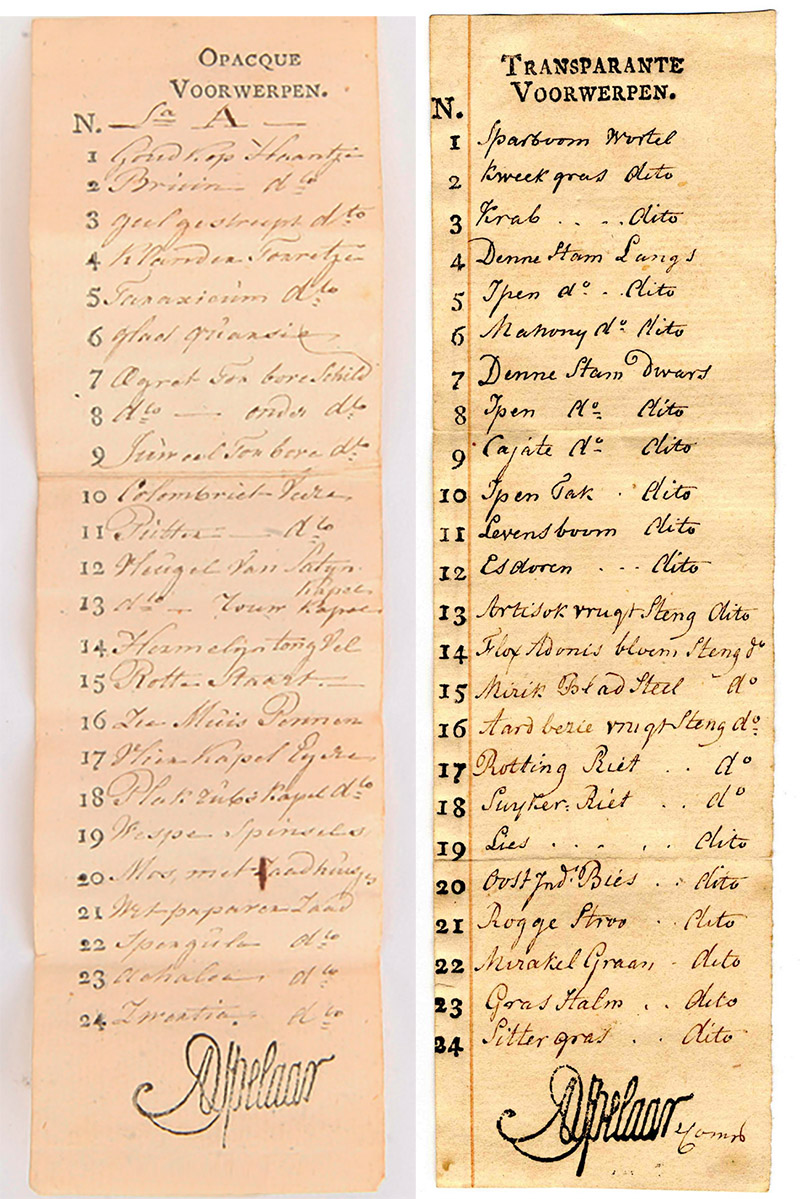
Figure 6.
Lists that accompany the small drawers of Ypelaar preparations that are shown above as Figures 3 and 4. The list on the left is stamped “A. Ypelaar”, indicating production prior to 1808. The list on the right has the same signature stamp, with the addition of “& Comp”, indicating production between 1808 and 1811. Adapted for nonprofit, educational purposes from an internet retail site and from The Harvard University Collection of Historical Scientific Instruments.
Resources
van der Aa, A.J. (1878) Biographisch woordenboek der Nederlanden, Vol. 21, J.J. van Brederode, Haarlem, accessed through http://www.dbnl.org/tekst/aa__001biog26_01/aa__001biog26_01_0018.php
Algemeene Konst- en Letter-Bode voor het Jaar 1811 (1811) Levensberigt van Abraham Ypelaar, A. Loosjes, Haarlem, pages 403-407
Rosenboom, Maria (1940) Some notes upon the life and work of certain Netherlands artificers of microscopic preparations at the end of the XVIIIth century and the beginning of the XIXth, Janus, Vol. 44, pages 24-44
Rosenboom, Maria (1956) Microscopium, National Museum for the History of Science, Leiden, page 57
Museum Internet Resurces:
Harvard University Collection of Historical Scientific Instruments
http://waywiser.rc.fas.harvard.edu/search/ypelaar
Planetarium Zuylenburgh
http://planetariumzuylenburgh.com/oud/CZ/Collectie_Z/Microscopen/Ypelaar_EN.htm